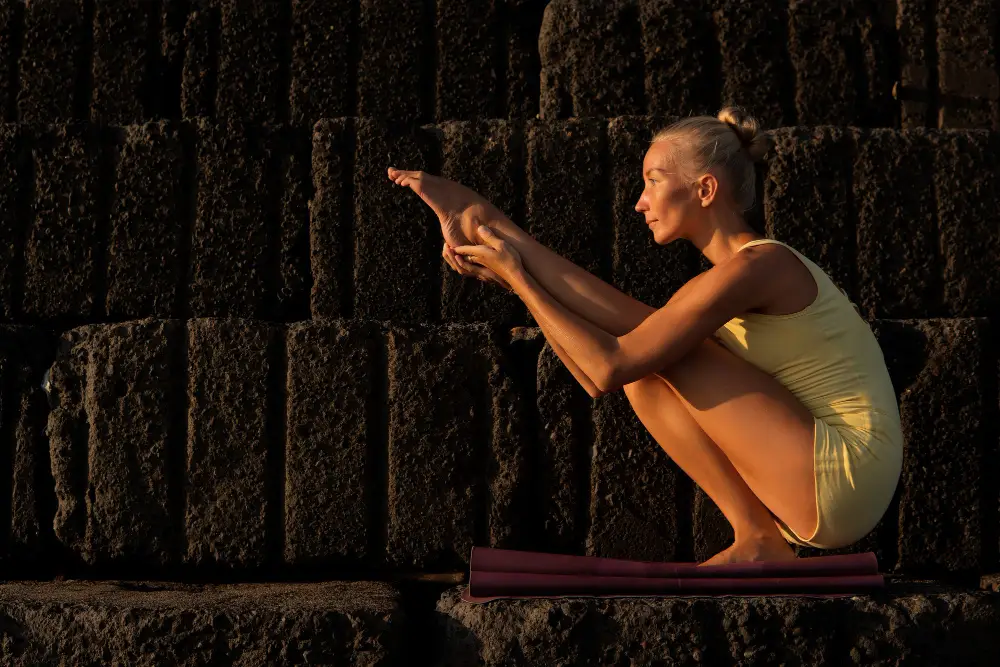Due to their emphasis on enhancing strength, flexibility, and mindfulness, yoga and Pilates are two well-liked types of exercise that are frequently combined. Although the two methods are somewhat similar, there are also some significant distinctions between them. To help you decide which exercise is best for you, we’ll examine the distinctions between yoga and Pilates in this post.
Philosophy and its origins

Traditional yoga has been practised for thousands of years and has its roots in ancient India. Yoga, which literally means “to yoke or combine,” focuses on tying together the mind, body, and soul. Yoga is a holistic discipline that incorporates breathing exercises, physical postures, meditation, and other forms of mindfulness.
Contrarily, Joseph Pilates created the more contemporary style of exercise known as Pilates in the early 20th century. The Pilates technique is intended to enhance flexibility and coordination while also strengthening the core muscles, enhancing balance and posture. Despite the fact that Pilates includes certain mindfulness exercises, it is essentially a physical activity.
Physical exercise
Although physical movements and postures are a part of both yoga and Pilates, there are some significant differences between the two disciplines.
Yoga often focuses on alignment, balance, and breath control while holding static poses for numerous breaths or minutes at a time. Yoga instruction can range greatly, from calm and meditative to active and athletic. Yoga styles that are frequently practised include Hatha, Vinyasa, Ashtanga, and Kundalini.
Pilates, on the other hand, emphasises energetic movements carried out with precision and control. Resistance training is frequently incorporated into Pilates exercises, which are frequently performed on a mat or with specific apparatus like a reformer. Pilates lessons are often organised around a set of repetitions of certain exercises.
Benefits
Many health advantages of yoga and Pilates include enhanced flexibility, strength, balance, and mindfulness. Nonetheless, some particular advantages are particular to each practise.
Yoga, which involves breathing exercises and meditation, is particularly helpful for stress relief and relaxation. Yoga can also help reduce pain and stiffness in the muscles and joints, as well as increase flexibility and range of motion.

The core muscles can be strengthened with Pilates, which can enhance balance and posture. Pilates can enhance athletic performance and help prevent injuries by fostering stronger muscle control and coordination.
Final Reflections
In the end, your own tastes, objectives, and degree of fitness will determine whether you choose to practise yoga or Pilates. These activities have a plethora of advantages, and many individuals discover that combining them can be a terrific way to develop a balanced and all-encompassing approach to health and wellness.
In conclusion, yoga and Pilates are two separate disciplines, each with its own philosophies, physical exercises, and advantages. Even though they have certain similarities, it’s crucial to recognise how the two practises differ in order to pick the one that best suits your requirements and preferences.
Explore various forms of Yoga and much more at Tranquil Yoga Studio. To know more about us, visit
We are located at 203, Barsha Business Square, Al Barsha 1, Dubai – UAE.
You can reach us on +971 50 359 7317, +971 4282 9955 or write to us at infotranquilyoga@gmail.com
Our Google Map link is as follows – https://www.google.com/maps/place/Barsha+Business+Square+-
+Al+Barsha+-+Al+Barsha+1+-+Dubai+-
+United+Arab+Emirates/@25.3518408,55.2431402,11z/data=!4m6!3m5!1s0x3e5f6b96beb692b1:0x
79f6e05d7d32e63d!8m2!3d25.1095975!4d55.1971349!16s%2Fg%2F1ptymqsff?hl=en-GB


Leave A Comment